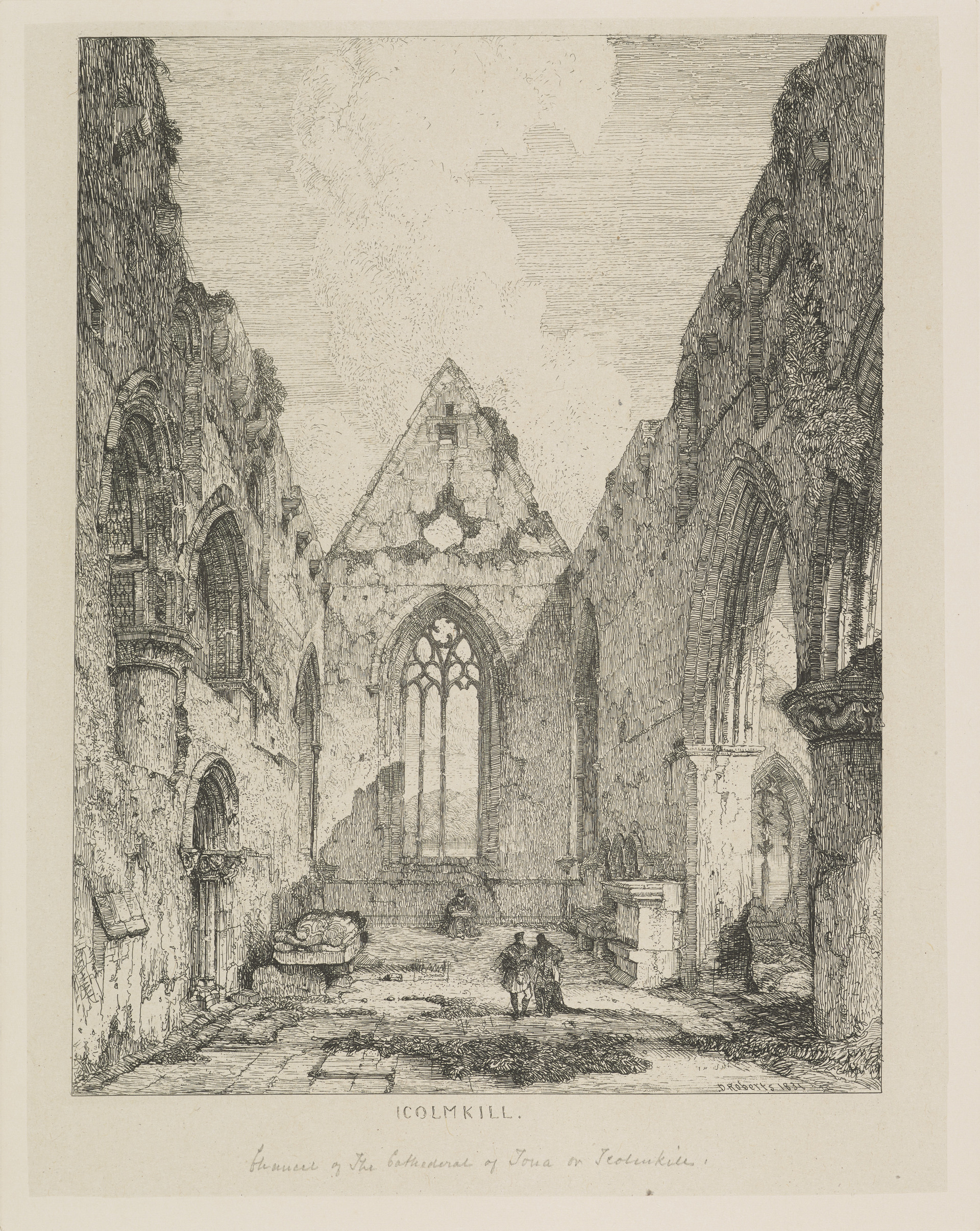Iona’s Singular Heritage

Iona’s Singular Heritage
Columba founded the Abbey on Iona in 563. He is known as the Father of the Founders of Monasteries, and Iona was the mother church, a model for thousands of monastic communities that followed in Britain and on the Continent. The Monks were dedicated to worship, study, industry and missions.
Iona and the Gaelic Abbeys that followed were independent from both Church and State, self governed and organized for self-reliance and self-sufficiency, serving its members and the wider community. Importantly, the Abbey boasted a chapel, library, school and scriptoria, along with buildings for the dormitory, refectory and guest house. The cemetery on Iona became the final resting place for Lords and Kings for centuries, even from Norway and Sweden.
There were vineyards, orchards, bird coops, workshops, fishing, farming, herding and tanning. All of the food to eat and wine and beer to drink was made there. Craftsmen created everything from the simple to the sublime, working in wood, wool, metal and jewels, from the necessities for everyday life to devotional treasures beyond compare. After worship and work providing for their needs, the focus was education, ministry and missions. The herds and tannery delivered goat and sheep skins for manuscripts and the monks in the scriptoria made copies of both sacred Christian texts and the collected works of secular authors from antiquity, often in Hebrew, Latin and Greek.
The schools were open to all and delivered literacy and education in Latin and Greek, grammar, logic, rhetoric, history, geometry, arithmetic and the natural sciences. The industry and frugality of the monks produced material surplus which was repurposed to the greater good and shared with visitors, guests and needy locals. Monks of Iona travelled and traded with the wider world, even to Eastern and African shores touching the Mediterranean. This model of comprehensive God honoring life was instilled in the monks, who undertook enduring missions – peregrinations pro Christo (exiles for Christ) – to minister to the surrounding pagan barbarians, planting new Abbeys in service of their mission of ministry. Columba himself is credited with founding certainly six and legend says as many as 30 Abbeys across Gaeldom, the paruchia Columcille (family of churches of Columba); his followers founded hundreds more that forged the common culture that unified Scotland, then England and onto the Continent to catalyze the development of Western Christian Civilization.
Scotus
photo credit: David Roberts, Icolmkill-Iona, The National Galleries of Scotland
